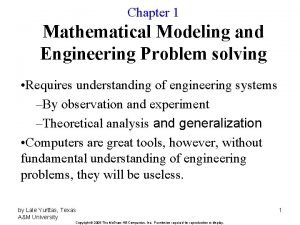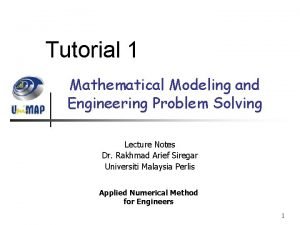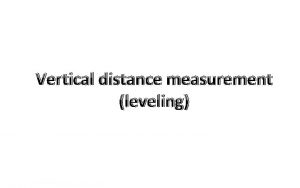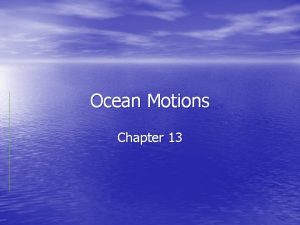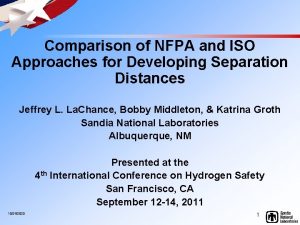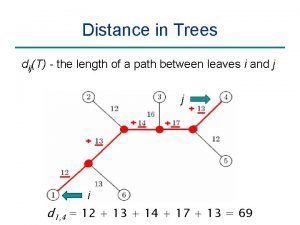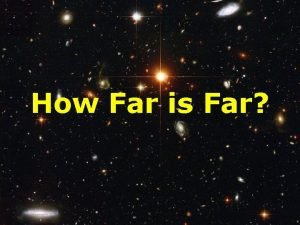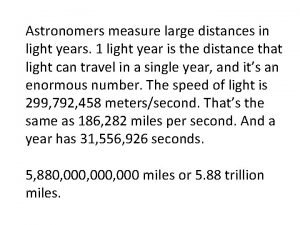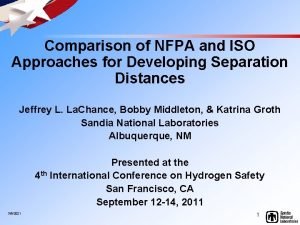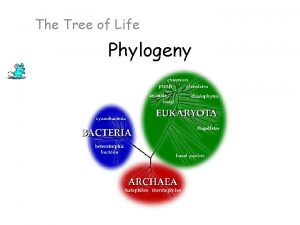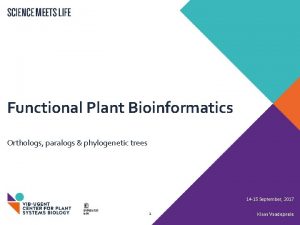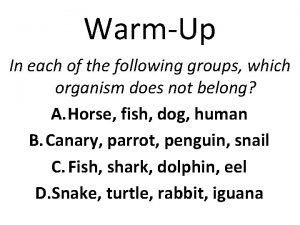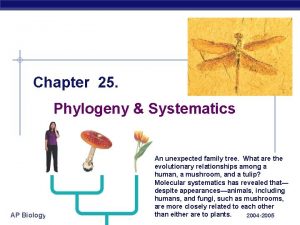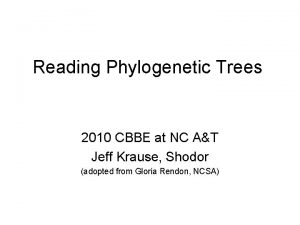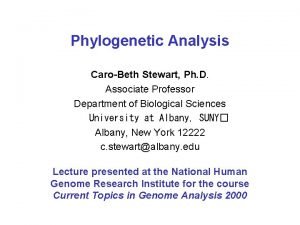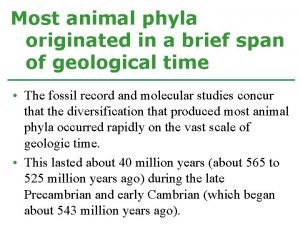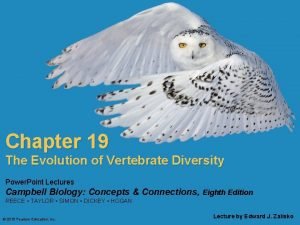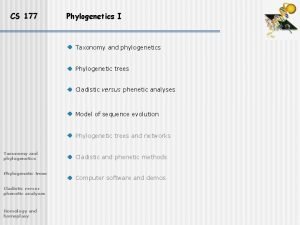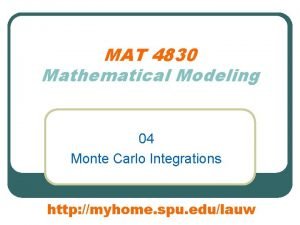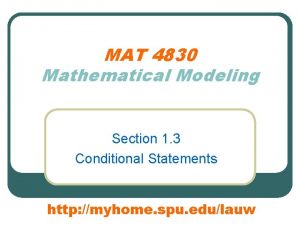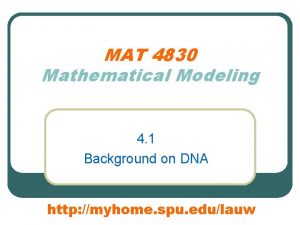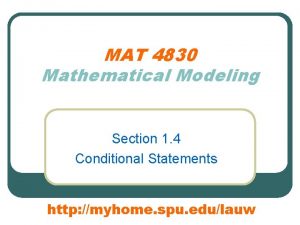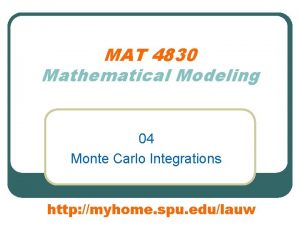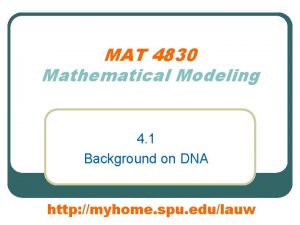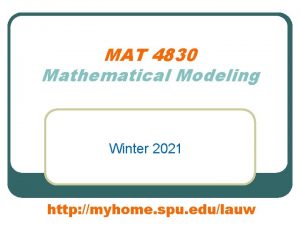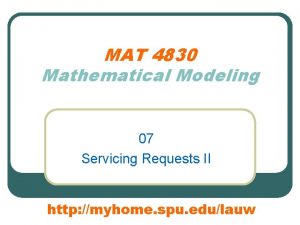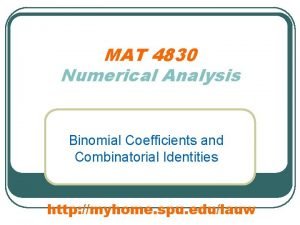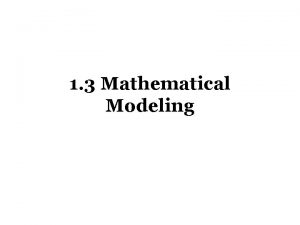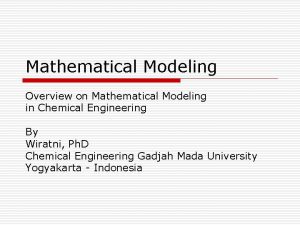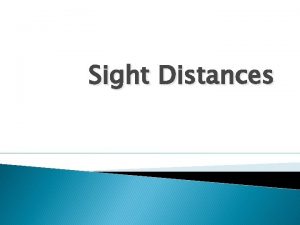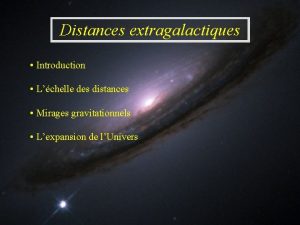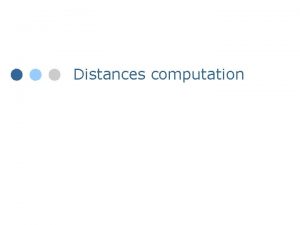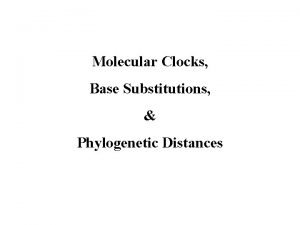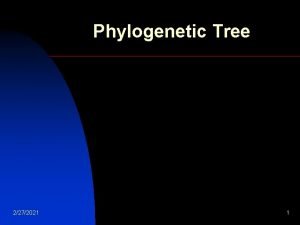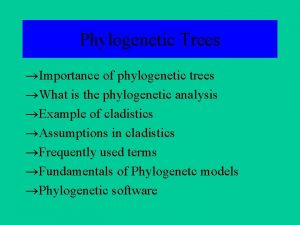MAT 4830 Mathematical Modeling 4 5 Phylogenetic Distances
































- Slides: 32

MAT 4830 Mathematical Modeling 4. 5 Phylogenetic Distances I http: //myhome. spu. edu/lauw

Preview l l Phylogenetic: of or relating to the evolutionary development of organisms Estimate the amount of total mutations (observed and hidden mutations).

Example from 4. 1 S 0 : Ancestral sequence S 1 : Descendant of S 0 S 2 : Descendant of S 1

Example from 4. 1 S 0 : Ancestral sequence S 1 : Descendant of S 0 S 2 : Descendant of S 1 Observed mutations: 2

Example from 4. 1 S 0 : Ancestral sequence S 1 : Descendant of S 0 S 2 : Descendant of S 1 Actual mutations: 5

Example from 4. 1 S 0 : Ancestral sequence S 1 : Descendant of S 0 S 2 : Descendant of S 1 Actual mutations: 5, (some are hidden mutations)

Distance of Two Sequences l l We want to define the “distance” between two sequences. It measures the average no. of mutations per site that occurred, including the hidden ones.

Distance of Two Sequences l 1. 2. 3. Let d(S 0, S) be the distance between sequences S 0 and S. What properties it “should” have?

Jukes-Cantor Model l l Assume α is small. Mutations per time step are “rare”.

Jukes-Cantor Model l q(t)=conditional prob. that the base at time t is the same as the base at time 0

Jukes-Cantor Model l q(t)=fraction of sites with no observed mutations

Jukes-Cantor Model l p(t)=1 -q(t)=fractions of sites with observed mutations

Jukes-Cantor Model l p(t)=1 -q(t)=fractions of sites with observed mutations

Jukes-Cantor Model l p can be estimated from the two sequences

Example from 4. 1 Observed mutations: 2

Jukes-Cantor Distance l Given p (and t), the J-C distance between two sequences S 0 and S 1 is defined as

Jukes-Cantor Distance l Given p (and t), the J-C distance between two sequences S 0 and S 1 is defined as

Jukes-Cantor Distance

Jukes-Cantor Distance

Jukes-Cantor Distance

Example from 4. 3 Suppose a 40 -base ancestral and descendent DNA sequences are

Example from 4. 3 Suppose a 40 -base ancestral and descendent DNA sequences are

Example from 4. 3 0. 275 observed sub. per site. 0. 3426 sub. estimated per site.

Example from 4. 3 11 observed sub. 13. 7 sub. estimated.

Performance of JC distance (Homework Problem 4) l Write a program to simulate of the mutations of a sequence for t time step using the Jukes. Cantor model with parameter α.

Performance of JC distance (Homework Problem 4) l l Write a program to simulate of the mutations of a sequence for t time step using the Jukes. Cantor model with parameter α. Count the number of base substitutions occurred.

Performance of JC distance (Homework Problem 4) l l l Write a program to simulate of the mutations of a sequence for t time step using the Jukes. Cantor model with parameter α. Count the number of base substitutions occurred. Compute the Jukes-Cantor distance of the initial and finial sequence.

Performance of JC distance (Homework Problem 4) l l Write a program to simulate of the mutations of a sequence for t time step using the Jukes. Cantor model with parameter α. Count the number of base substitutions occurred. Compute the Jukes-Cantor distance of the initial and finial sequence. Compare the actual number of base substitutions and the estimation from the Jukes -Cantor distance.

Performance of JC distance (Homework Problem 4)

Maple: Strings Handling II l Concatenating two strings

Maple: Strings Handling II l However, no “re-assignment”.

Classwork l Work on HW #1, 2
 Modeling and role modeling theory
Modeling and role modeling theory Relational modeling vs dimensional modeling
Relational modeling vs dimensional modeling Mathematical modeling and engineering problem solving
Mathematical modeling and engineering problem solving Mathematical modeling and engineering problem solving
Mathematical modeling and engineering problem solving Mathematical modelling of electrical systems
Mathematical modelling of electrical systems Mathematical economics vs non mathematical economics
Mathematical economics vs non mathematical economics Measure of the vertical distance
Measure of the vertical distance Ted likes to run long distances
Ted likes to run long distances Easterlies and westerlies
Easterlies and westerlies Navigation using speed, distance and time calculations
Navigation using speed, distance and time calculations Gas particles are separated by relatively large distances
Gas particles are separated by relatively large distances How do waves form
How do waves form Distance covered per unit time.
Distance covered per unit time. Images of weather systems on television come from
Images of weather systems on television come from A simple pendulum of length 40 cm subtends 60
A simple pendulum of length 40 cm subtends 60 The furthest distance ive travelled
The furthest distance ive travelled Nfpa separation distances
Nfpa separation distances Tree distances i
Tree distances i Hexagon agility test counterclockwise time
Hexagon agility test counterclockwise time Far distances
Far distances Astronomers measure large distances
Astronomers measure large distances Horizontal movement of air is called
Horizontal movement of air is called Nfpa separation distances
Nfpa separation distances What is a sister group in phylogeny
What is a sister group in phylogeny Orthologs and paralogs in phylogenetic tree
Orthologs and paralogs in phylogenetic tree Kpcofgs
Kpcofgs Analogy vs homology
Analogy vs homology Taxonomy of bacteria
Taxonomy of bacteria Cladogram vs phylogram
Cladogram vs phylogram Unrooted phylogenetic tree
Unrooted phylogenetic tree Phylogenetic tree of animal phyla
Phylogenetic tree of animal phyla Chordate phylogenetic tree
Chordate phylogenetic tree Rooted vs unrooted phylogenetic tree
Rooted vs unrooted phylogenetic tree


